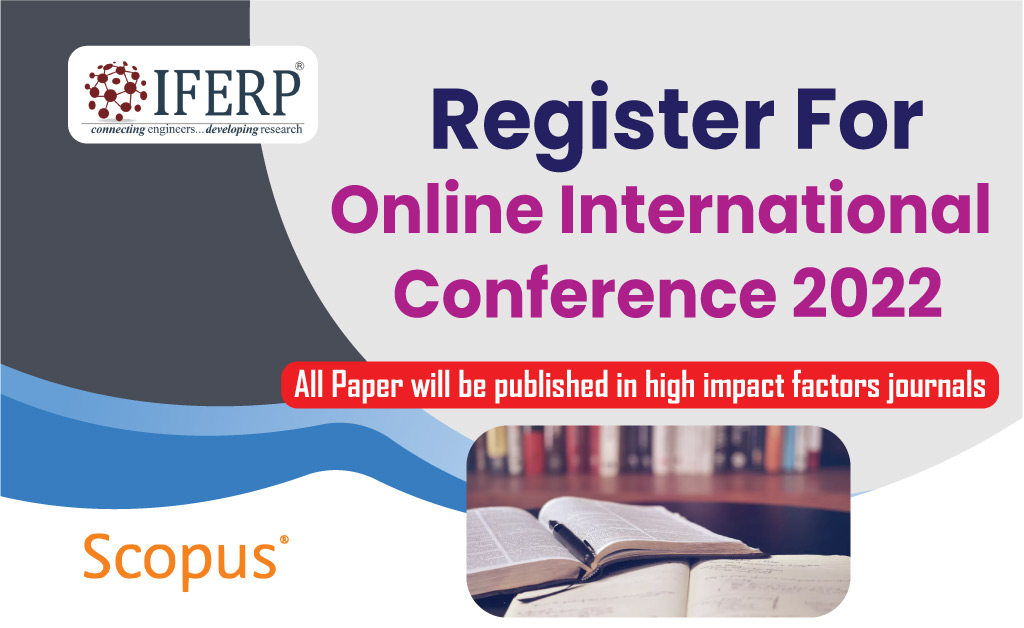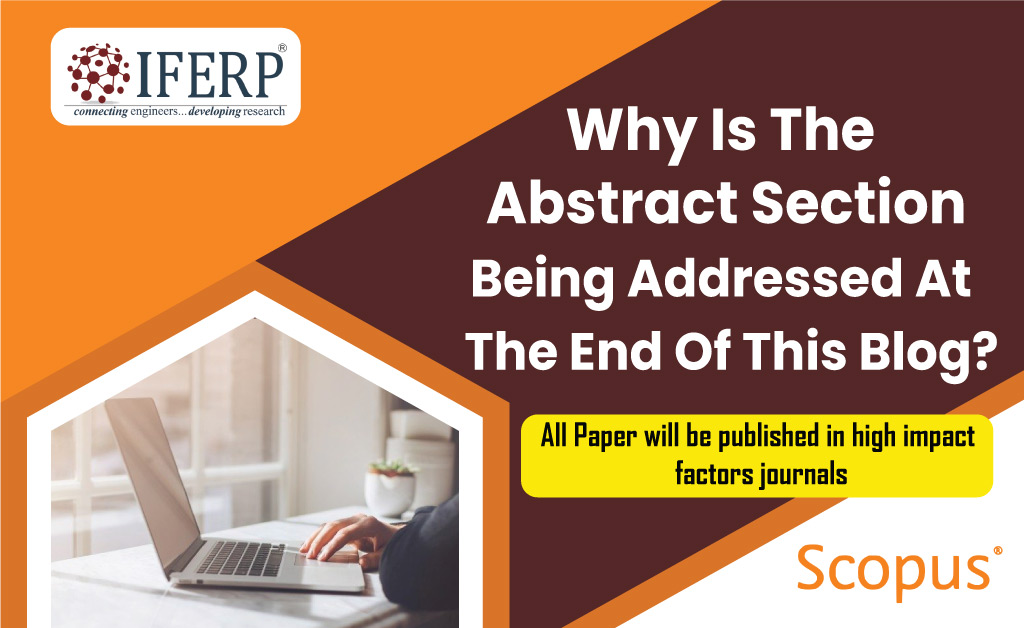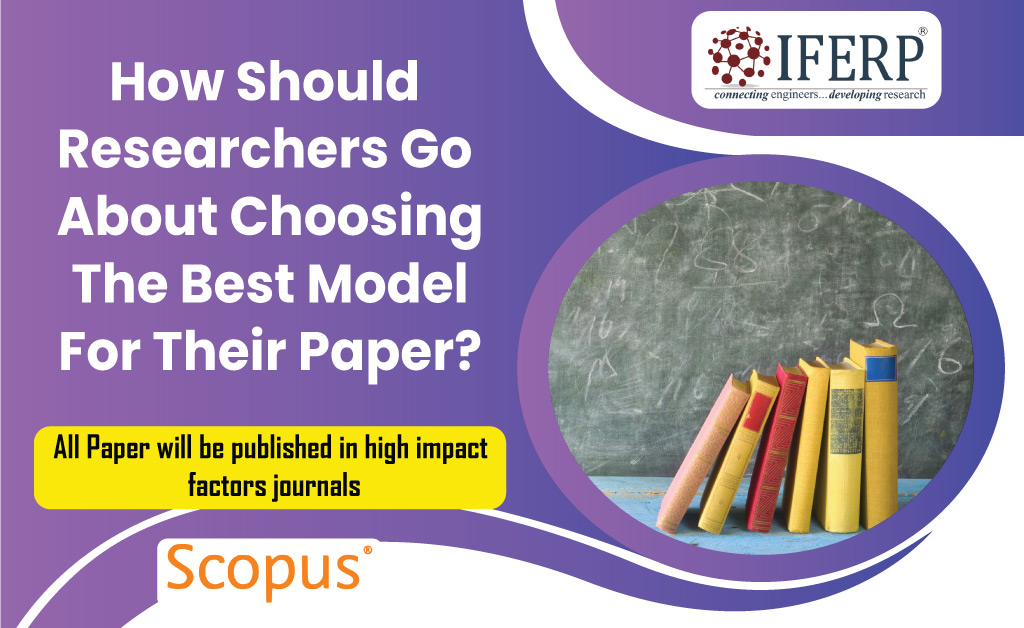Most scientific researchers are able to read and understand complex and high-level documents in their fields. However, they may struggle to produce written English that is at the same level as their reading. They may feel that their writing in English does not represent the content of their work effectively or accurately. The objective of this IFERP blog is to make it possible such researchers to use their reading ability and the material they read to develop the writing skills their profession necessitates.
Developing the skills to write their own research is the only way for researchers to join the international scientific community. If they rely on English speakers to translate their writings, the translation may not represent exactly what they intended. If they rely on proofreaders to correct their English, certain mistakes may not be noticed and rectified, because a grammatically correct sentence is always “wrong” if it doesn’t mean what they intended. Additionally, a proofreader may not check whether their writing matches conventional “scientific research” patterns. For instance, they may have forgotten to justify their choice of method or explain the link between their results and their original question, which could mean that an editor of a scientific journal rejects their article as unprofessional. Attending a 2023 engineering and technology conference will help researchers gain more insight on all the reasons why a research paper may be rejected.
Writing and publishing high quality scientific research paper is the best way for researchers to get their careers off the ground. If they can turn their thesis or research project into a useful document, their CV (Curriculum Vitae) will immediately look more professional and be more internationally competitive. They may think they don’t have time to improve their English, but they already know most of what they need from the reading they’ve done over the years. In order to write their research for publication, they don’t need to learn much more English than they already know. Scientific writing is far easier than researchers tend to think it is.
Most scientific research is written in a fairly conventional structure –
- first comes the title;
- this is followed by the abstract;
- then comes the introduction;
- after which there is a middle section that describes what was done and what was found;
- then a discussion and/or a conclusion;
- at the end of the article or research paper, acknowledgments and citations are added.
This implies that the structure of a research article is almost the same for all authors no matter what field they belong to.
Because scientific writing is so conventional, the amount of grammar and vocabulary researchers need to learn is quite small. For instance, the non-technical vocabulary made use of in scientific writing is comprised of a limited set of words such as –
- determine,
- conduct,
- formulate,
- implement
- attempt,
- correlate,
- interpret,
- evaluate,
- improve, and
- classify,
which are used as a sort of “code”. All the vocabulary researchers need to get started (apart from specialized vocabulary in their field) can be learned easily. Register for an upcoming international conference 2022 to learn more about research writing vocabulary building.
- The Key To Writing An Intro
- So far, much of scientific writing has focused on writing reports in which researchers simply describe what they did and what they found.
- Although this assists them in writing the middle “report” sections (methodology and findings) of their research papers or thesis, it doesn’t prepare them for writing introductions to whole research papers; this remains an unknown task that awaits them once they move on to research writing.
- In practice, they will find that they have to be sure of what the research they’ve done and what they have discovered to write the introduction. Therefore the best time to write it will be after they have written, or at least drafted, the headings of their report.
- Nevertheless, in this blog, the structure of a research paper is presented in the order in which the section appears in a research paper so that research authors can trace the links between each part and see the order in which the information is presented to the reader.

- Researchers may want to start their introduction by describing the problem they’re trying to solve or the purpose of their work, but as they’ll see when they review the published work, that’s not how most research papers start – and therefore this is not the purpose of their work or the best way for them to start.
- In order to help researcers write the Introduction to their own research, the model they build should answer the following three questions –
- How do writers normally start the introduction?
- What sort of information and data should I include in my introduction, and in what order?
- How do authors normally end the introduction?
- The Key To Writing The Methodology Section
- The title of this section varies between disciplines and Scopus indexed journals 2023.
- It is sometimes referred to as ‘Materials and Methods’, or it may be referred to as ‘Model’, ‘Procedure’, ‘Methodology’, ‘Simulation’ ‘Experiments’, or ‘Experimental’.
- This section forms the first part of the central “report” section of the research paper, and it offers an idea of what a researcher did and/or what they used.
- Most journals publish (usually on the Internet) an Author’s Guide.
- Before researchers start reading this unit, they should access the guidebook of a journal they read regularly – if they’re lucky, it will include a brief description of what editors expect in each section in addition to technical information about numbers.
- Here is a typical phrase from such a guide – “The methodology should contain enough detail for readers to replicate the work done and achieve similar results.”
- It’s true that a researcher’s work should contain enough detail to be reproducible, but the type of writing they’ll need to do isn’t just a record of what they did and/or made use of.
- One of the most significant modifications they need to make in the way they write is that so far they’ve probably written for people (perhaps their professors) who know more about their research topic.
- They have shown them that they understand the tasks they have set and that they have carried them out correctly.
- However, when the researcher writes a research paper, people will learn from him/her. It is therefore now necessary for researchers to be able to communicate information on –
- a new procedure,
- a new method,
- a new approach,
so that everyone can not only carry it out and obtain similar results, but also understand and accept their procedures.
- Researchers need to ask themselves the following three important questions –
- How to start the Methodology/Experiments section? What kind of sentence should I start with?
- What kind of information and data should be in this section and in what order should I present them?
- How do I conclude this section?
- Researchers are already aware that the Methodology should contain a detailed description of what they did and/or used, and this helps answer the second of the three questions.
- This, however, is not a complete answer; to be effective and consistent with what is conventionally done in a research paper, this section also has to contain other important information.
- The Key To Writing The Results Section
- The title of this section varies between disciplines, as well as between journals.
- Instead of Results, it is sometimes referred to as ‘Analysis’ or ‘Data Analysis’.
- Lited below are four options for subtitles from this point until the end of the research paper.
- Option 1
- Results or data analysis,
- Discussion,
- Conclusion(s).
- Option 2
- Results or data analysis,
- Discussion.
- Option 3
- Results and discussion,
- Conclusion(s).
- Option 4
- Results or data analysis,
- Discussion and conclusions).
- In any case, this section reports a resercher’s comments on what they discovered or noticed, and if the subtitle has the word ‘Discussion’ (i.e. Results & Discussion) in it, it comprises all or part of the ‘Discussion’ section.
- As with the Methodology section, the most optimal way to pick an appropriate subtitle is to consult the Author’s Guide of the journals they read regularly.
- In most cases, the results of their work can be presented in the form of graphs, tables, equations or images.
- Why, then, should they bother writing a Results section?
- Why not just provide good, clear charts or tables with good, clear titles and maybe a few notes under each?
- Thinking about these questions is a great way to start understanding what they should write.
- Almost everyone writes a Results section, so it’s clear that some things can’t be achieved by solely using tables, graphs, or other images of their results.
- They can only be reached by using words. There are many reasons to write a results section.
- First, some of their results may be more interesting or meaningful than others, and it’s hard to communicate that in a chart or graph.
- In addition, it is essential to relate their results to the purpose(s) of the research.
- Third, in some cases, they may want to provide background information to explain why a particular result occurred or to compare their results with those of other searchers.
- Additionally, their results may be problematic; maybe some experiments were not fully successful and they want to suggest possible reasons for this.
- Nevertheless, one of the most significant reasons for writing a Results section rather than relying on charts, tables, and other images is that they need to communicate their own understanding and interpretation of the findings to their readers.
- The results do not speak for themselves; if they did, tables or graphs of their results would suffice.
- Their readers don’t have to agree with them, but they do need to know their opinion and understand their results.
- So researchers need to ask themselves the following three questions –
- How to start the Results section? What type of sentence should I start with?
- What kind of information should be in this section and in what order?
- How do I end this section?
- Researchers already know that this section contains comments about what they found or observed rather than just a description of their findings and observations, and that helps answer the second question.
- Partake in an international conference 2023 to learn more about this topic.
- The Key To Writing The Discussion/Conclusion Section
- The title of this subsection differs from journal to journal.
- Some reviews end with a subsection titled Discussion, some end with a subsection titled Results and Discussion, and some end with a subsection titled Conclusions.
- In the first two cases, the elements that should be included in the discussion are similar.
- When there is a Conclusions section, it is short and usually consists of one or two paragraphs that focusses on particular aspects of the discussion.
- The graphic representation at the beginning of every unit is symmetrical because many elements of the introduction are found in the discussion/conclusion in (approximately) reverse order.
- The introduction moves from a general and broad perspective to the narrower “report” section of the document, and the discussion/conclusion moves away from that narrow section to focus on a broader, more general topic.
- The Discussion returns to the points raised in the Introduction based on the information contained in the central section of the report.
- Let’s go back to the four components of the Introduction –
- Establising the importance of the domain;
- Providing contextual facts and information (probably research);
- Defining terminology in the title and keywords;
- Introducing the problem area and current research;
- Previous and current research contributions;
- Locating any gaps in research;
- Describing the problem that will be solved;
- Presenting a prediction to test;
- Decribing the entire research paper.
- When they started their introductions, researchers helped their readers transition to the research article by establishing that the topic was important, providing background information, and so on.
- By following the same pattern in reverse, they end the discussion/conclusion by helping their readers get out of the article.
- In the Introduction, they wrote about the work of other researchers, creating a kind of research map for their readers so they could see what kind of work existed in that area; in the Discussion/Conclusion, they situate their study in relation to this research map.
- They then proceeded through the introduction to locate a research gap or describe a problem associated with existing research; in the discussion/conclusion, they are expected to say to what extent they have addressed this gap or resolved this issue.
- At the end of the introduction, they have written about this article, interfacing with the content of their own work so that they can move the reader to the central report section of their article; in the Discussion/Conclusion, as we will see, it is common to start by revisiting certain aspects of a researcher’s work, in order to create this upside-down interface and allow them to move away from the central part of the report.
- The three important questions that researchers need to ask themselves include –
- How do I begin the Discussion/Conclusion section? What sort of sentence should I start with?
- What kind of information should be in this section and in what order?
- How do I end this section?
- Although researchers may think they have no idea how to write the discussion/conclusion section, they in fact know a quite lot about what to include and in which order.
- Get registered for an upcoming virtual conference 2023 to find out more about this topic.
- The Key To Writing An Abstract Section
- The structure and content of the summary has changed over the past decades.
- Prior to online publication databases such as SCI and SCOPUS, abstracts were printed at the top of a research article and their function was primarily to encourage the reader to continue reading the article and to facilitate this reading by providing a brief overview.
- The reader and author did not consider the abstract of a research article to be an independent unit owing to the fact that it was not normally read without reference to the article itself.
- The Internet has influenced how scientific research is communicated and how scientists access published research.
- Abstract databases allow scientists to search and browse the scientific literature and then decide which research articles they want to read in detail.
- Some readers just want to know what’s going on in their area of research and might not be interested in the specifics; others may wish to know the details, but are only interested in research articles directly relevant to their own research.
- However, if readers are actually going to read a researcher’s article, the abstract now needs to persuade them to get a copy, not just encourage them to keep reading an article they’ve already accessed.
- Abstracts compete for attention in online databases. More people read titles than they do abstracts, and many more will read the abstract than the full article.
- This means that even if the summary is “good” and well-written, it must have independent validity.
- It should make sense as a stand-alone, self-contained description of the research paper, and readers must be able to comprehend the key points and research findings even if they never see the entire article.
- The abstract, in this sense, serves in offering a representation of the entire research article.
- Why Is The Abstract Section Being Addressed At The End Of This Blog?
- First, the style and length of the abstract depends on where a researcher plans to submit it, and this decision can be made late in – or even after – the writing process.
- However, the most important reason for offering inputs on how to write the Abstract section at the end of this article is that researchers are in a better position to create a summary after they have finished writing the other sections of their articles.

- The content of the summary is derived from the rest of the article, not the other way around.
- Although researchers don’t have to simply cut and paste entire sentences from the body of the article, the summary doesn’t contain material that isn’t already on paper.
- This means that they don’t need to create completely new sentences; once they have decided what should be in the abstract, they can select material, including parts of phrases and sentences, from the relevant sections of the document and adapt or modify it to meet the requirements of an abstract.
- It also means that the summary is easier to write than the rest of the paper.
- Does Every Abstract Follow The Same Pattern?
- No, and the title of the summary reflects it. Some are called Summary, some are called Background, some are called Abstract, and some have no title at all.
- Most summaries are outcome-oriented and there are fundamental similarities in all summaries, but there are two quite distinct patterns.
- The first model is akin to a summary, and is very structured.
- It covers all the major subsections of the research article and may even have subheadings such as –
- Background,
- Method,
- Results,
- Conclusions.
- The second model is more common and focuses mainly on one or two aspects of the study, usually – but not always – the method and the results.
- Both models will be discussed here. Note that the abstract templates described here are suitable for papers, articles, theses, etc. Conference abstracts may not follow any of these patterns.
- How Should Researchers Go About Choosing The Best Model For Their Paper?
- This decision is based on the type of research that researchers have done and the Author’s Guide of the journal in which they wish to publish their research.
- The decision is usually made by the journal instead of the author.
- If the choice is their’s, then, generally speaking, the narrower and more specific their research topic, the less likely they are to use the abstract format.

- Indeed, in a narrow field of research, most readers already know the context.
- The word limit set by every journal also has an impact on the structure and as a result also on the abstract’s content.
- Therefore, the three important questions that researchers need to ask themselves include –
- How do I start the summary? What type of sentence should I start with?
- What sort of data should I include in the summary and in what order?
- How do I end this section?
- Researchers already know a lot about what the Abstract should include and in what order.
Important Takeaway For Non-Native English Speaking Research Authors
Success as a scientist is not just a function of the quality of the ideas that researchers have in their heads or the data they have in their hands, but also of the language they use to describe them. Researchers all understand that “publish or perish” is an actuality and that it dominating principle in their profession. But “publish or perish” means survive, not succeed.
Researchers don’t succeed as scientists by getting papers published. They succeed as scientists by having them quoted. Having their work matters is what counts the most. Success for researchers isn’t defined by the number of pages they’ve printed, but by their influence. Researchers succeed when their peers understand their work and use it to motivate theirs. The importance of citation and impact is why fast publishing Scopus journals are measured by impact factor and why the citation-based H-factor is becoming increasingly important in evaluating individual researchers. If they have 10 publications that have each been cited 10 times, they have an H of 10; if they have 30 articles that have each been cited 30 times, they have an H of 30; but if they published 100 papers and none were cited, on the H factor, they would rate a bending as zero. Success therefore does not come from writing but from effective writing.
On noticing works of exceptional quality and notoriety, one can notice that their authors are able to express ideas in clear and effective language that speaks to a wide audience. Is this pattern accidental? No. Not only do these men and women think deeper and more creatively than most of us, but they are also able to communicate their thought in ways that make it easier to assimilate. This is how they became leaders.
A researcher’s first reaction to this observation may be to assume that these people think more clearly than most, and therefore write more clearly. True, they do both, but it is less clear which direction the causality goes. Does clear thinking lead to clear writing? Or, conversely, does clear writing give rise to clear thinking? Although the answers to these questions might seem intuitive, rest assured they aren’t.
Download the IFERP App to get access to more blogs and articles such as this one.


